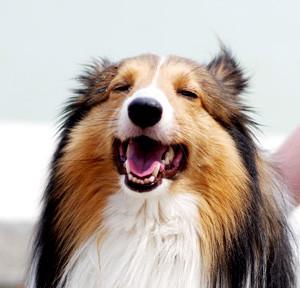
Pet Dental Health
Wednesday, February 1, 2017
February is National Pet Dental Health Month. Bad breath in your dog or cat may signify a serious health risk that has the potential to damage not only your pet’s teeth and gums but also its internal organs.
According to the American Veterinary Medical Association, brushing your pet’s teeth daily is a great place to start.
It’s important to use the proper tools. Do not use human toothpaste as the foaming ingredient in fluoride could cause an upset stomach. Only use pet toothbrushes and toothpaste, which you can get from your veterinarian or at a pet store.
Start by letting your pet lick the toothpaste to become familiar with the taste. Toothpaste comes in beef, chicken or mint flavors.
Gradually work in the use of a brush to your daily routine. A soft bristle brush or a finger brush made specifically for pets will do the job effectively.
Offer lots of praise and a favorite healthy treat to reinforce good behavior during and after brushing your pet’s teeth.
Periodontal disease is the most common clinical condition in cats and dogs, even though it is completely preventable.
Periodontal disease begins when bacteria in the mouth forms plaque. Minerals in the saliva harden the plaque to form tartar.
The problem begins when the tartar spreads under the gum line. Infection, if left untreated, can then spread to internal organs.
Periodontal disease damages the structure that supports the tooth. It can lead to gum recession, bone loss, loose teeth, bone infection and fractured jaws.
A professional dental cleaning by a veterinarian removes the plaque and tartar that causes periodontal disease. Your veterinarian will have the expertise to remove the plaque and tartar both on the crown of the tooth and under the gum line where the disease starts. General anesthesia is required for a thorough dental cleaning.
Your cat or dog can’t tell you when their mouth hurts. They may have symptoms such as bad breath or eating ‘funny’ when offered hard foods. They may shy away when you touch the mouth area. It is important to have your veterinarian examine your pet’s mouth during their annual physical to assess the health of the teeth and gums.
While February is National Pet Dental Health Month, good dental care should be part of your daily routine in caring for your pets.
Additional information can be found on the American Veterinary Dental College website.
by Elisabeth Giedt, DVM
Veterinary Viewpoints is provided by the faculty of the OSU Veterinary Medical Hospital. Certified by the American Animal Hospital Association, the hospital is open to the public providing routine and specialized care for all species and 24-hour emergency care, 365 days a year.
